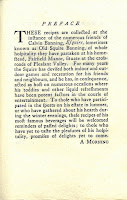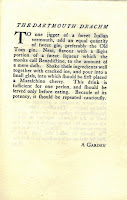Dickinson (1830-1866) may well be one of the most well-known literary voices, male or female, in American history—but this was not case in her own day. A recluse and "spinster" by her late-twenties, Dickinson hardly published any of her poetry during her lifetime, choosing instead to circulate it privately among her friends and family. And while she may not be an overtly “feminist” writer in the way we might categorize one today, she has often been championed by feminist critics as a poet who opted out of the traditional social expectations placed on nineteenth-century women.
Several of Dickinson's poems included in Sampler allude, rather subversively, to the restrictions placed on women during her day. Take "I'm Wife—I've finished that":
I'm "wife"—I've finished that—
That other state.
I'm Czar—I'm "woman" now—
It's safer so.
How odd the girl's life looks
Behind this soft eclipse.
I think that earth feels so
To folks in heaven, now.
This being comfort—then
That other kind was pain.
But why compare?
I'm "wife"! Stop there!
Here we can see Dickinson grappling with her feminine self-identity: the difference between being a woman and a wife, as well as the difference between men and women. A man can be a Czar, but
woman only a wife. "Stop There!"
Kiki Smith's (b. 1954) visual accompaniment to Sampler brings the themes of feminine self-identity and women’s work only further to the fore. The book's cover makes this immediately apparent, with "Sampler" and Dickinson and Smith's names cross-stitched across it in maroon embroidery thread. In fact, making "samplers"—pieces of cloth with embroidered or cross-stitched pictorial scenes or phrases—was a common pastime for American women in the 18th and 19th centuries, and was a way to showcase their aptitude for domestic skills. Throughout the book, Smith continues to play with the distinctly feminizing aesthetic of needlework. Each of her prints is composed of small red hatch lines, which are meant to mimic the effect of cross-stitching, and were directly inspired by historic textile collections held in major American art museums such as the Metropolitan Museum of Art.
Smith is a multidisciplinary artist well-known for her feminist subject matter, and her art often explores the cultural and social role of women through representations of the female body. And although Smith is rarely so subtle in her work (the image of the feral she-wolf plays a reoccurring role in her art), she is in many ways a perfect companion for the reserved New England poet. Like Dickinson, Smith too is preoccupied with how women operate within and outside of social expectations and cultural boundaries and Smith’s contributions to this wonderful compilation reaffirms the continued relevancy of Dickinson's poetry especially with respect to the personal and lived experiences of women.
You can view Sampler by asking for Presses A712dick at the reference desk.





